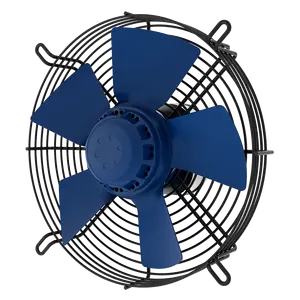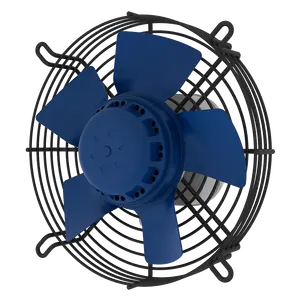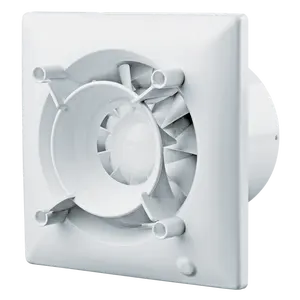Top categories

Smart Home Appliances

Other Home Appliances

Cleaning Appliances

Major Kitchen Appliances

Second-hand Appliances

Refrigerators & Freezers

Air Quality Appliances

Heating & Cooling Appliances

Home Appliance Parts

Laundry Appliances

Small Kitchen Appliances

Water Treatment Appliances

Water Heaters

Personal Care & Beauty Appliances
About products and suppliers
In the relentless pursuit of industrial efficiency, the role of air conditioning (AC) fans has become more pivotal than ever. With the advent of innovative technologies, today's AC fans are not just about cooling; they're a testament to the remarkable journey of air conditioning from ancient passive methods to cutting-edge, energy-efficient systems. This article delves into the latest advancements in AC fan technology, exploring how these innovations are shaping the future of industrial cooling, ventilation, and environmental control. Join us as we uncover the evolution, types, and applications of AC fans that are setting new standards for industry leaders and offering a glimpse into a more sustainable and efficient future.
The Evolution of AC Fan Technology
The concept of air conditioning has evolved significantly since its inception. Early methods of cooling spaces involved passive techniques, such as the double-walled structures in ancient Hamoukar, which utilized airflow to regulate temperature. These methods were widespread until the 20th century when powered air conditioning began to replace them. The development of modern air conditioning technology can be traced back to the 19th century with advancements in compression technology. The discovery that compressing and liquefying certain gases could chill air was a pivotal moment in the evolution of air conditioning.
The introduction of electricity further propelled the development of air conditioning units. The early 20th century marked the beginning of the modern electrical air conditioning era, as it was able to control both temperature and humidity. This innovation laid the groundwork for the air conditioning systems we are familiar with today. The subsequent decades saw a rapid expansion of air conditioning technology, with the creation of the first domestic air conditioning in 1914 and the advent of individual room air conditioners in 1931.
As the 20th century progressed, air conditioning became more accessible and widespread, leading to innovations that provided not just cooling but also heating, humidification, dehumidification, and air filtration. These advancements have set the stage for the modern AC fans that are now an integral part of air conditioning units, contributing to the enhanced performance and efficiency of today's HVAC systems.
Types of AC Fans Available on Alibaba.com
Alibaba.com showcases a diverse range of AC fans designed to meet various industrial requirements. Among the types available, solar-powered attic fans stand out for their eco-friendly operation, utilizing solar energy to power high-speed ventilation. Industrial settings often employ heavy-duty exhaust fans, capable of handling large volumes of air, essential for warehouses and greenhouses. The selection includes axial fans, which are suitable for high-pressure applications, and portable blower fans that offer flexibility in construction and workshop environments.
For specialized applications, there are butterfly cone fans tailored for poultry farms, promoting effective cooling and exhaust. Evaporative air coolers provide an energy-efficient cooling solution, leveraging the natural process of water evaporation. Wall-mounted and ceiling ventilation fans are also prominent, designed for efficient heat extraction and air circulation. Additionally, the range features various sizes and configurations, from compact 12-inch models for targeted airflow to expansive 50-inch fans for comprehensive ventilation.
Technological advancements are evident in the AC fans featured on Alibaba.com, with options like DC-powered roof exhaust fans that offer an alternative to traditional AC power sources. The industrial sector can also find specialized evaporative coolers for buses, ensuring passenger comfort. For greenhouse applications, high-capacity blower fans with significant airflow capabilities are available, aiding in maintaining optimal growing conditions. The assortment caters to a broad spectrum of industrial cooling and ventilation needs, reflecting the latest in AC fan innovation.
Innovative Features in Modern AC Fans
Modern AC fans are equipped with innovative features that enhance their functionality and efficiency. One such feature is advanced motor speed control, which is adept at managing AC motors, pumps, and fans across various applications such as HVAC, electronics, and industrial control. These fans stand out with their ability to adjust motor speed based on different inputs, including control signals, remote transducers, or temperature sensors, catering to a range of environmental conditions.
Flexibility is a hallmark of these advanced fans, with automatic voltage and frequency detection and compatibility with both 115 and 230 VAC power sources. They are designed to handle current ratings up to 7.5 Amps and offer various mounting and connection configurations. Such versatility makes them a suitable choice for diverse industrial needs.
The use of advanced motor speed control in AC fans can lead to several benefits. It contributes to a quieter operational environment by reducing acoustical noise. Moreover, it aids in the precise regulation of environmental factors such as humidity, temperature, or pressure, enhancing product reliability and safety. Additionally, the energy savings realized through its use underscore its role in promoting sustainability in industrial settings.
Applications of Advanced AC Fans in Industry
Industrial fans, including AC fans, are integral to various applications across industries. They are designed to cater to a range of functions, from air quality improvement to material handling. AC fans are employed in systems that require the movement of air to support operations and maintain ambient air quality. These fans are versatile, capable of handling environments with light dust loading, fume extraction, and even heavy particulate removal.
In the realm of industrial applications, AC fans are essential for processes that involve air saturated with moisture or gases. Custom-engineered solutions are available to meet specific environmental conditions, ensuring that the fans operate effectively regardless of the presence of corrosive elements or high temperatures. The ability of AC fans to process various particles, such as sand, plastic pellets, and wood chips, makes them a crucial component in industries ranging from agriculture to manufacturing.
The innovation in AC fan technology is evident in the way these fans are tailored based on customer feedback, focusing on efficiency and durability. Whether the need is for clean air handling or material conveyance, AC fans are designed to perform reliably, contributing to the overall safety and functionality of industrial systems.
Material Advancements in AC Fan Construction
In the realm of AC fan construction, material innovation plays a pivotal role in enhancing performance and durability. The use of advanced plastics in fan blades is a testament to this progress. These materials are selected for their ability to maintain rigidity and provide consistent performance. The plastic fan blades, produced through injection molding, come in a variety of configurations, catering to diverse industrial needs. They range in size and feature different blade pitches and rotational directions, ensuring versatility for specific applications. The manufacturing process of these fan blades is designed for rapid and continuous production, ensuring that they meet the rigorous demands of commercial and industrial environments.
Energy Efficiency and Sustainability
Eco-conscious individuals are increasingly considering the environmental impact of air conditioning. Sustainable air conditioning solutions, such as evaporative cooling, whole house fans, geothermal cooling, radiant cooling, and the strategic use of ceiling fans, offer alternatives to traditional AC systems. Evaporative cooling, for instance, is highly efficient in arid climates, significantly reducing energy consumption by utilizing the natural process of water evaporation. Whole house fans provide a cost-effective method to cool homes, leveraging the natural flow of air. Geothermal cooling systems capitalize on the stable underground temperatures to cool spaces with remarkable efficiency. Radiant cooling systems, which can be integrated into existing structures, use chilled water panels to absorb heat, proving to be energy-efficient especially in low-humidity areas. Additionally, the use of ceiling fans in conjunction with air conditioners can reduce the perceived temperature in a room, allowing for lower AC usage. These innovative cooling methods not only minimize energy use but also contribute to a reduced carbon footprint, aligning with sustainable living principles.
Selecting the Right AC Fan for Your Industrial Needs
When selecting an AC fan for industrial use, it's crucial to consider the fan's air circulation capacity and its noise level. These two characteristics are essential for ensuring that the fan meets the specific needs of your application while maintaining a comfortable noise environment. Propeller fans and centrifugal fans are the two main types available, each suited for different scenarios. Propeller fans typically offer a simpler design and are used for general ventilation, whereas centrifugal fans are better for applications requiring higher pressure or more directed airflow. By evaluating these factors, one can choose a fan that provides optimal performance for their industrial requirements.
Advantages of Sourcing AC Fans from Alibaba
Industrial fans, particularly AC fans, are essential components in various industrial settings, offering efficient temperature regulation in expansive spaces such as factories and warehouses. The diverse range of AC fans available includes models designed for wall mounting, and the large ceiling fans with aluminum blades and DC motors, suitable for extensive areas needing constant air circulation.
Alibaba's selection encompasses fans with specific features such as motor overheat protection, indicating a focus on safety and durability. The platform also lists HVLS (High-Volume, Low-Speed) fans, which are innovative in their design to provide effective airflow while maintaining energy efficiency. These fans are particularly beneficial for large-scale industrial environments, ensuring a comfortable working atmosphere and aiding in the preservation of goods by reducing excessive heat.
The variety extends to exhaust fans, including powerful metal wall-mounted options and axial fans designed for cooling and ventilation in specialized areas. Alibaba's range of AC industrial fans also features portable and stand fans, which offer flexibility and ease of use in different industrial scenarios. The availability of different sizes and configurations allows businesses to select fans that best suit their specific needs, ensuring optimal performance and air distribution.
Conclusion
The landscape of industrial cooling and ventilation has been transformed by the latest innovations in AC fan technology. From the historical milestones of air conditioning to the diverse and eco-friendly options available, these advancements have paved the way for smarter, more adaptable, and energy-efficient solutions. The intelligent motor speed control fans exemplify the technological strides made in enhancing operational efficiency and environmental sustainability. The application of advanced materials in fan construction further underscores the commitment to durability and performance. As industries worldwide strive for optimization, the careful selection of AC fans tailored to specific industrial needs becomes crucial. Alibaba's extensive range of AC fans, equipped with features like motor overheat protection and HVLS technology, demonstrates the platform's dedication to providing quality and variety. In conclusion, the progress in AC fan technology not only reflects the dynamic nature of industrial requirements but also the global shift towards energy conservation and sustainable practices. For industry leaders looking to stay ahead, embracing these innovations is not just a choice, but a necessity for future growth and environmental responsibility.
















 浙公网安备 33010002000092号
浙公网安备 33010002000092号 浙B2-20120091-4
浙B2-20120091-4